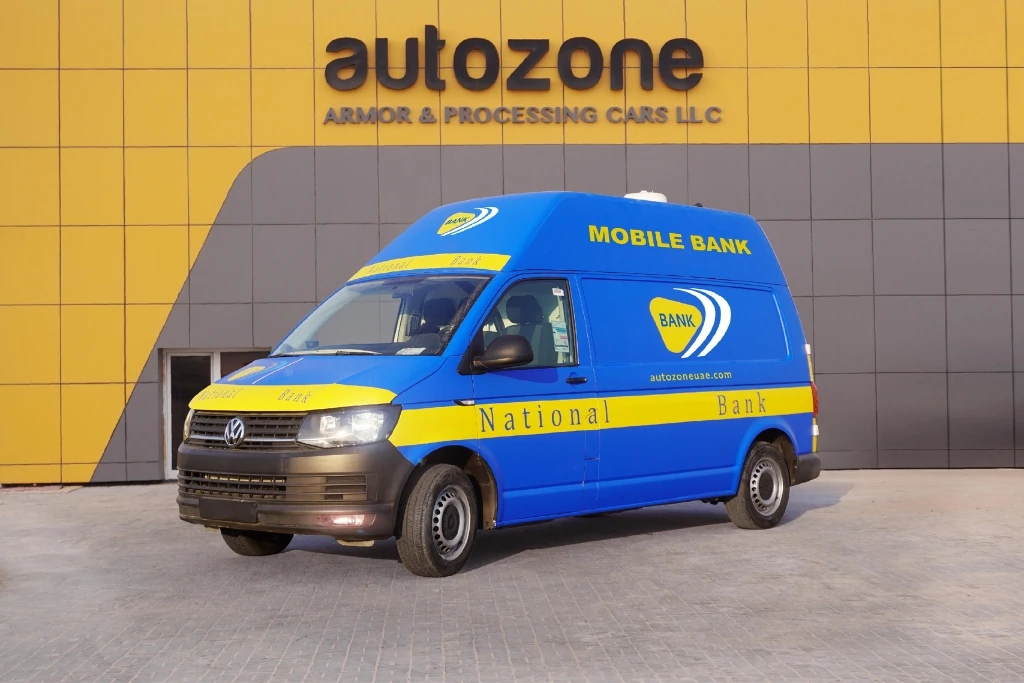In a world where convenience and efficiency are prized above all else, mobile banking has become an increasingly popular option for managing one’s finances. But have you ever heard of a mobile banking vehicle?
This innovative concept takes the idea of on-the-go banking to the next level by bringing financial services directly to customers wherever they may be. Whether it’s a bustling city street or a remote rural area, these vehicles offer access to traditional banking services in a unique and modern way.
In this blog post, we’ll explore the ins and outs of mobile banking vehicles, their benefits and challenges, and what impact they could have on the future of finance. So, buckle up and get ready to hit the road with us as we take a closer look at this exciting development in the world of mobile banking.
History and Evolution of Mobile Banking Vehicles
The concept of mobile banking vehicles is rooted in the long history of mobile financial services, which began with the introduction of automated teller machines (ATMs) in the late 1960s. As technology advanced, the idea evolved to include services that could reach customers in various settings without the need for a physical branch.
By the 1980s and 1990s, banks began experimenting with delivery vehicles to provide access to banking services for underserved populations. These early initiatives primarily focused on rural areas where traditional banking options were limited.
The evolution accelerated with the advent of the internet and smartphones in the early 2000s, allowing for more sophisticated banking solutions that could adapt to customer needs. Today, mobile banking units not only offer essential banking services such as deposits and withdrawals but also incorporate advanced technologies, including mobile apps and cash management systems.
This transformation reflects the ongoing shift toward more accessible and inclusive financial solutions, paving the way for innovative approaches that continue to shape the future of banking.
Key Features of a Mobile Banking Vehicle
- Accessibility: Mobile banking vehicles are designed to reach customers in both urban and rural areas, ensuring financial services are available to those who may not have easy access to traditional branches.
- Versatile Services: These vehicles offer a range of banking services, including account opening, deposits, withdrawals, loan applications, and financial consultations.
- Technology Integration: Equipped with modern technology, banking vehicles often feature digital terminals, mobile apps, and secure cash management systems to facilitate transactions efficiently.
- Customer-Centric Design: Interiors are designed to provide a welcoming atmosphere with comfortable seating and private consultation areas, enhancing the overall customer experience.
- Eco-Friendly Options: Many banking vehicles incorporate sustainable practices, such as electric or hybrid engines, aligning with the growing focus on environmental responsibility.
- Real-Time Connectivity: Equipped with Wi-Fi and communication systems, they can provide real-time updates on account status and transaction history to customers during their visits.
- Community Engagement: These vehicles often serve as community hubs, hosting financial literacy programs and workshops to educate customers about managing their finances effectively.
Benefits of Mobile Banking Vehicles
Mobile banking vehicles offer a wide range of advantages that cater to the needs of diverse communities. Their unique approach to delivering financial services not only enhances accessibility but also fosters greater financial inclusion. Here are some key benefits:
- Improved Accessibility: These vehicles bring banking services directly to underserved areas, reducing travel time and effort required for customers to access financial services.
- Enhanced Convenience: Customers can conduct banking transactions in their own neighborhoods, making it easier to manage their finances without the need to visit a traditional branch.
- Increased Financial Inclusion: By targeting populations with limited access to banks, mobile banking units help bridge the gap for those who may not have had banking services previously available.
- Personalized Service: The intimate setting allows for one-on-one interactions with banking representatives, providing tailored advice and financial guidance based on individual needs.
- Community-building: Mobile banking vehicles often engage with local communities, fostering relationships and trust between financial institutions and customers.
- Cost-effective Operations: For banks, maintaining a fleet of mobile banking can be more cost-efficient than establishing new branches in remote areas.
- Promotion of Financial Literacy: Many mobile banking initiatives include educational programs, helping customers to understand financial products and services better, leading to improved financial knowledge and decision-making.
Use Cases of Mobile Banking Vehicles
Mobile banking vehicles serve a variety of practical purposes that cater to diverse community needs. One notable use case is providing banking services during natural disasters or emergencies. In such situations, traditional banks may be inaccessible, but bank on wheels can deliver essential services like cash access and account assistance to affected populations, helping them regain financial stability.
Moreover, these vehicles can play a vital role in financial inclusion initiatives by reaching unbanked or underbanked demographics. For example, banks on wheels can visit low-income neighborhoods, offering services such as account openings, loan applications, and financial education resources, which can significantly empower local residents.
Another compelling use case is event-based banking, where mobile banking vehicles can be set up at large gatherings, fairs, or community events. This creates opportunities for on-site marketing, allowing banks to engage with potential customers, promote their services, and facilitate immediate account sign-ups or product enquiries, all while enhancing their community presence.
Lastly, mobile banking vehicles can effectively collaborate with local organizations, schools, and community centers to deliver workshops that promote financial literacy. By targeting specific groups, they can provide tailored financial education programs that equip individuals with the knowledge and skills to manage their finances more effectively, boosting overall community financial well-being.
How Mobile Banking Vehicles Operate
Mobile banking vehicles operate through a well-structured model that ensures efficiency and customer satisfaction. Here’s a breakdown of how they function:
- Routing and Scheduling: Plan their routes based on community needs, scheduling regular visits to specific neighborhoods and events to provide reliable access to banking services.
- Staffing: Each vehicle is typically staffed with trained banking professionals who can assist customers with various transactions and provide financial advice.
- Onboard Technology: Equipped with advanced technology, including secure digital terminals and mobile apps, these vehicles facilitate smooth transactions and enhance the banking experience.
- Security Measures: Implement robust security protocols, including surveillance systems and secure cash management practices, to protect both staff and customers.
- Community Partnerships: Collaborations with local organizations and community leaders help identify service gaps and ensure the vehicles meet the unique needs of the populations they serve.
- Feedback Mechanism: Regular customer feedback is gathered to improve service offerings and adapt to changing community requirements more effectively.
By intertwining modern technology with community engagement, mobile banking vehicles create responsive and inclusive banking solutions for diverse populations.
Future of Mobile Banking Vehicles
Advancements in technology and increasing demand for financial inclusion are driving a significant transformation in the future of mobile banking vehicles. As digital banking continues to evolve, these vehicles are likely to incorporate more sophisticated technologies such as artificial intelligence and machine learning to enhance customer interactions and streamline services. For instance, using AI-driven chatbots within the mobile banking platforms can offer real-time assistance, making banking more efficient and user-friendly.
Furthermore, the integration of renewable energy sources, like solar panels, can enhance the sustainability of mobile banking operations, reducing their carbon footprint while minimizing operational costs. As communities become more connected through technology, mobile banking van may also leverage data analytics to better understand customer needs, enabling banks to tailor services and outreach efforts more effectively.
In addition, partnerships between banks and fintech companies could bring innovative solutions to mobile banking, allowing them to offer a wider range of financial products, such as microloans or investment options, directly within the community. As regulatory frameworks evolve to support these advancements, the scope and impact of special vehicles can expand significantly, ultimately contributing to a more financially inclusive society.
FAQ’s – Mobile Banking Vehicle
How do you think having a mobile banking vehicle would benefit your community?
Having a mobile banking vehicle in the community would greatly benefit residents by enhancing access to essential banking services, especially for those in remote areas or facing mobility challenges. It would also foster financial literacy by providing educational resources and personalized support directly within the community.
Can I open a new bank account in a Mobile Banking Vehicle?
Yes, many Mobile Banking Vehicles offer the service of opening new bank accounts. You will need to provide the necessary identification and documentation, just as you would at a regular bank branch.
Are Mobile Banking Vehicles accessible to people with disabilities?
Banks strive to make their Mobile Banking Vehicles as accessible as possible, often including features like ramps and accessible counters to accommodate customers with disabilities.
How do I find out the schedule for a Mobile Banking Vehicle?
The schedule for Mobile Banking Vehicles is typically available on the bank’s official website, through customer service, or via announcements on social media and local community centers.
What should I bring with me to use the services of a Mobile Banking Vehicle?
You should bring any necessary identification, account information, and relevant documents depending on the service you require. For specific requirements, it’s best to check with your bank beforehand.
Conclusion
Mobile banking vehicles represent a significant leap forward in the evolution of banking services. Their ability to provide timely and secure access to financial resources has transformed the customer experience, making banking more convenient than ever. As industries continue to adapt to technology, the role of mobile banking units will likely expand, addressing both consumer needs and operational efficiencies.
However, it’s crucial for stakeholders to remain vigilant about potential challenges related to security and compliance. The future promises even greater innovations that could reshape financial services further. Embracing this technology today can set the foundation for a more accessible and efficient banking system tomorrow.

 AR
AR FR
FR






